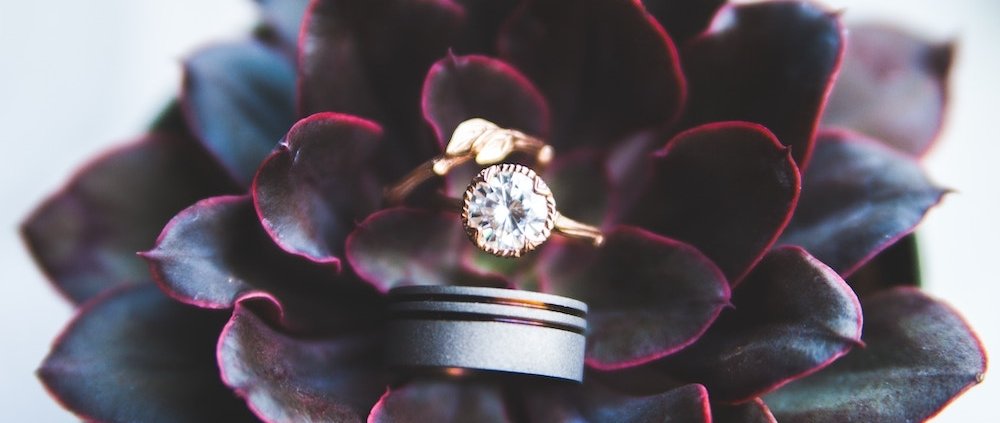Know Your Diamonds
How can something so small be so beautiful! Worth so much! It is fascinating how a rock miniature can lend a multitude of shine and sparkle to the person wearing it. What is this ravishing rock? Yes, we are talking about diamonds, the flash of brilliance!
We all wear diamonds, but have you ever wondered where they come from, what shape and sizes do they exist in and what colors are available. We invest a lot in diamonds and it is worth to know about them too. So, Krown Kouture is here to give you all the insights about diamonds.
Where do Diamonds Formulate?
The diamond you are wearing is probably billions of years old. Yes, fascinating! Because diamonds were formed billions of years ago through a combination of pressure and temperatures beneath the earth’s surface. Owing to volcanic activity, the diamonds were brought closer to the earth’s surface.
Thanks to their popularity, diamonds are mined in massive quantities each year, with an average of 130 million carats (about 28,000 tons) being brought to the surface annually. Another 110,000 tons of synthetic diamonds are produced in laboratory environments each year. Ravishing facts!
Meanwhile not to forget mentioning that the ancient Romans and Greeks believed that diamonds were tears cried by the gods or splinters from falling stars, and Romans believed that Cupid’s arrows were tipped with diamonds. Now you know where the association of diamonds and romantic love comes from!
And there are 4 C’s to identify good diamonds. By Cut, Color, Clarity and Carats.
Diamonds: By Cut
Every diamond has its own cut, consequently the names. Ranging from the princess cut diamonds, the cushion cut diamonds, the oval cut diamonds, the pear cut diamonds, the round cut diamonds, the asscher cut diamonds, the marquise cut diamonds, the radiant cut diamonds, the heart cut diamonds, the trillion cut diamonds and the emerald cut diamonds. Nevertheless, the list is dazzling and never-ending. Moreover, most of the shape names are self-explanatory but the mistake people make is categorizing all diamonds into a heart or a pear shape, whereas, the names are different and plenty. So, amp up the game people!
Diamonds: By Color
Following the varied types of diamonds by cut are the diamond types by color. Although, everyone assumes diamonds are colorless, it is true but not for all diamonds. Moreover, the popular diamond colors are yellow, blue, red, pink, orange, green, black, purple, brown and grey. Additionally, more colors are yet to be discovered. And eventually, based on color, some diamonds have a name too. Like a green one is known as an emerald, a blue is a sapphire and the regal red is a ruby! There are diamonds with a blend of colors too, which are more valuable.
Diamonds: By Clarity
As known, natural diamonds are the result of carbon exposed to tremendous heat and pressure deep in the earth. Consequently, this process can result in a variety of internal characteristics called inclusions and external characteristics called blemishes. Henceforth, evaluating diamond clarity involves determining the number, size, relief, nature, and position of these characteristics, as well as how these affect the overall appearance of the stone. While no diamond is perfectly pure, the closer it comes, the higher its value!
Diamonds: By Carats
Diamond carat weight is the measurement of how much a diamond weighs. A metric carat is defined as 200 milligrams. Each carat can be subdivided into 100 ‘points.’ As a result, this allows very precise measurements to the hundredth decimal place. ‘ All else being equal, diamond price increases with carat weight, because larger diamonds are more rare and more desirable.
Where are Diamonds Fabricated?
On the whole, a diamond’s value is determined using all of the 4Cs. However, lending shape to the diamond to create ornate pieces of jewels is crucial too. How is it adorned in dazzling designs that accentuate the wearer’s charisma?
Changing a rough diamond and polishing it to turn it into a faceted gem requires great skill. Adept craftsmen for this task are rare. And the hub for this is India. Apart from India, this takes place in South Africa, Belgium and China. There are other countries too, but the scale is not that huge.
In India, the processing is done in Surat and Mumbai. The country holds 19-31% of the world market of polished diamonds followed by China at 15%. This means that 92% of the world’s diamonds are polished in India. Indeed, India is a world leader in revealing a diamond’s brilliance!
Beautiful! Rare! Cherished! Each diamond is unique and a miracle of time, place and change! A scintillating diamond is for eternity!




Leave a Reply
Want to join the discussion?Feel free to contribute!